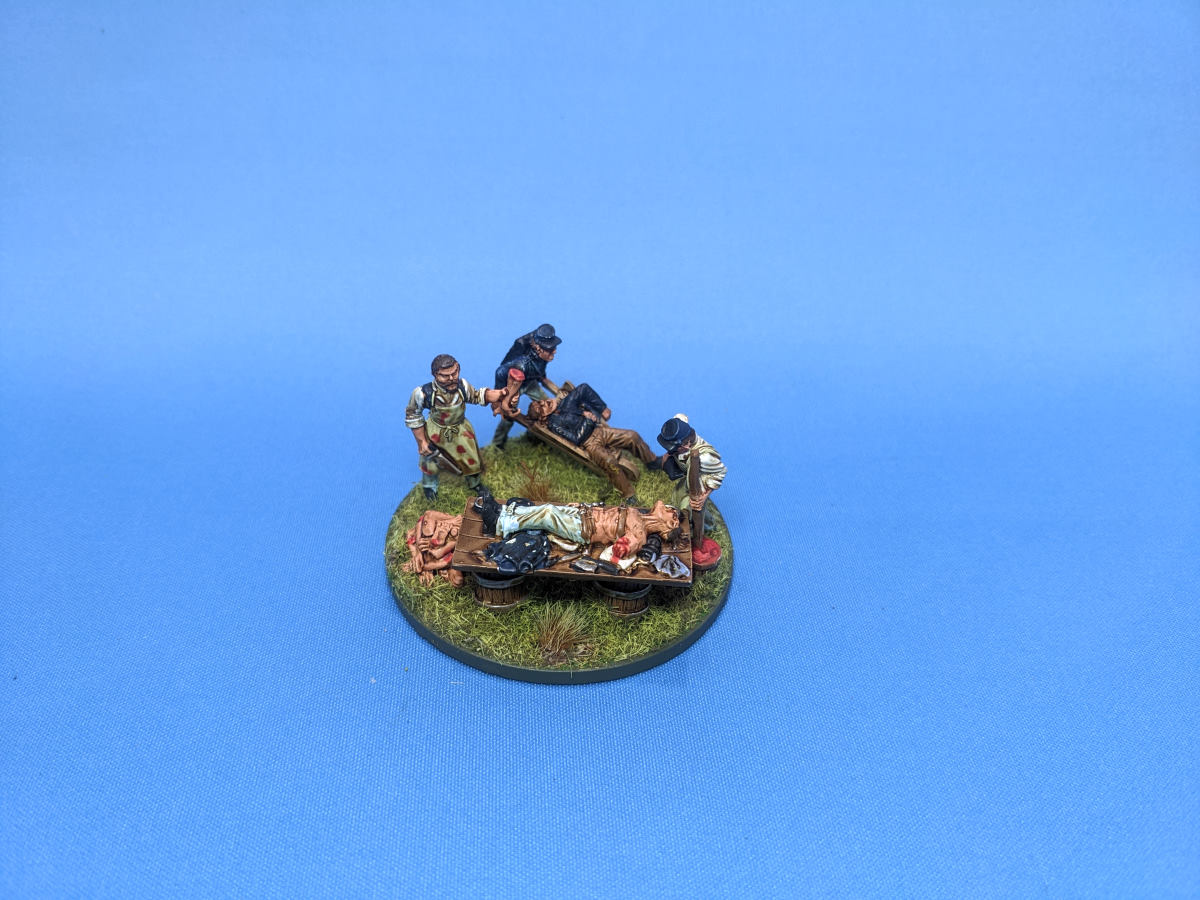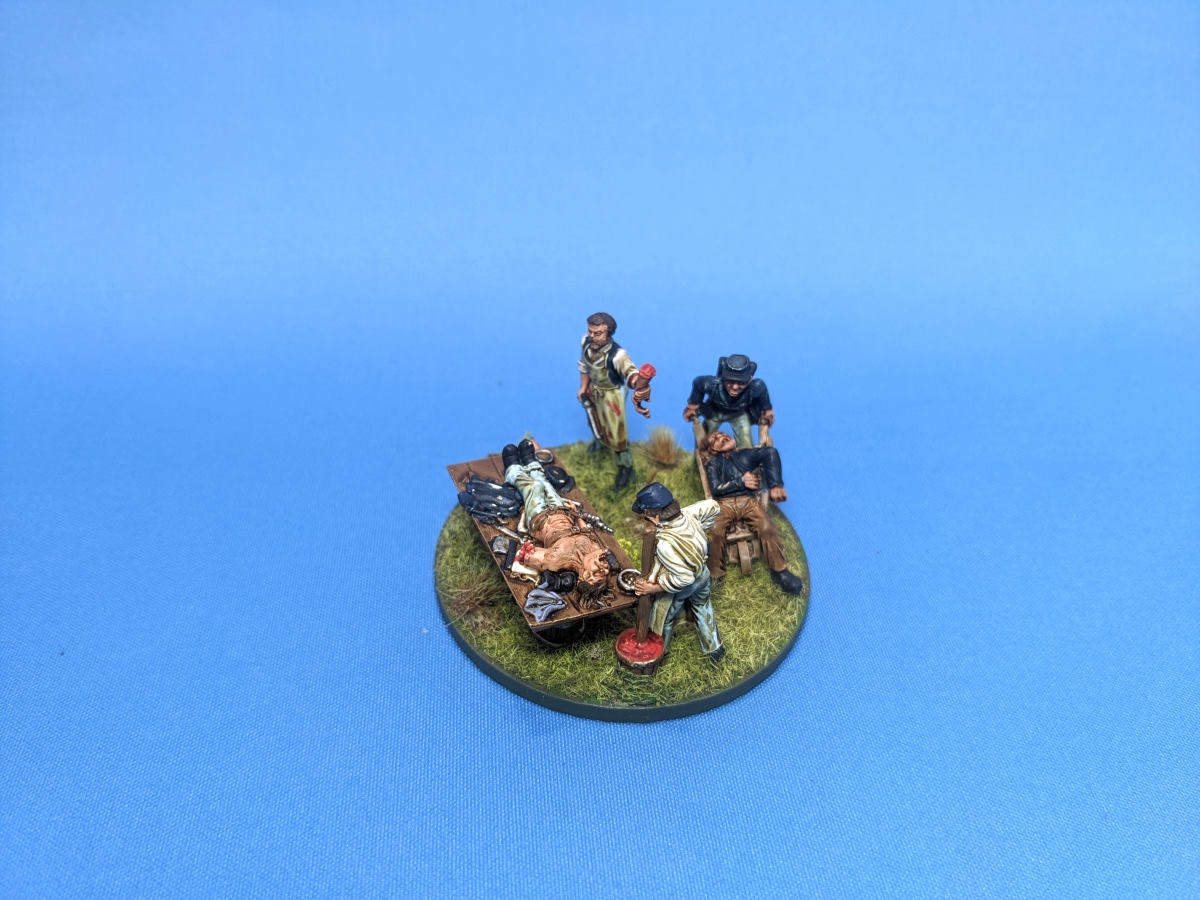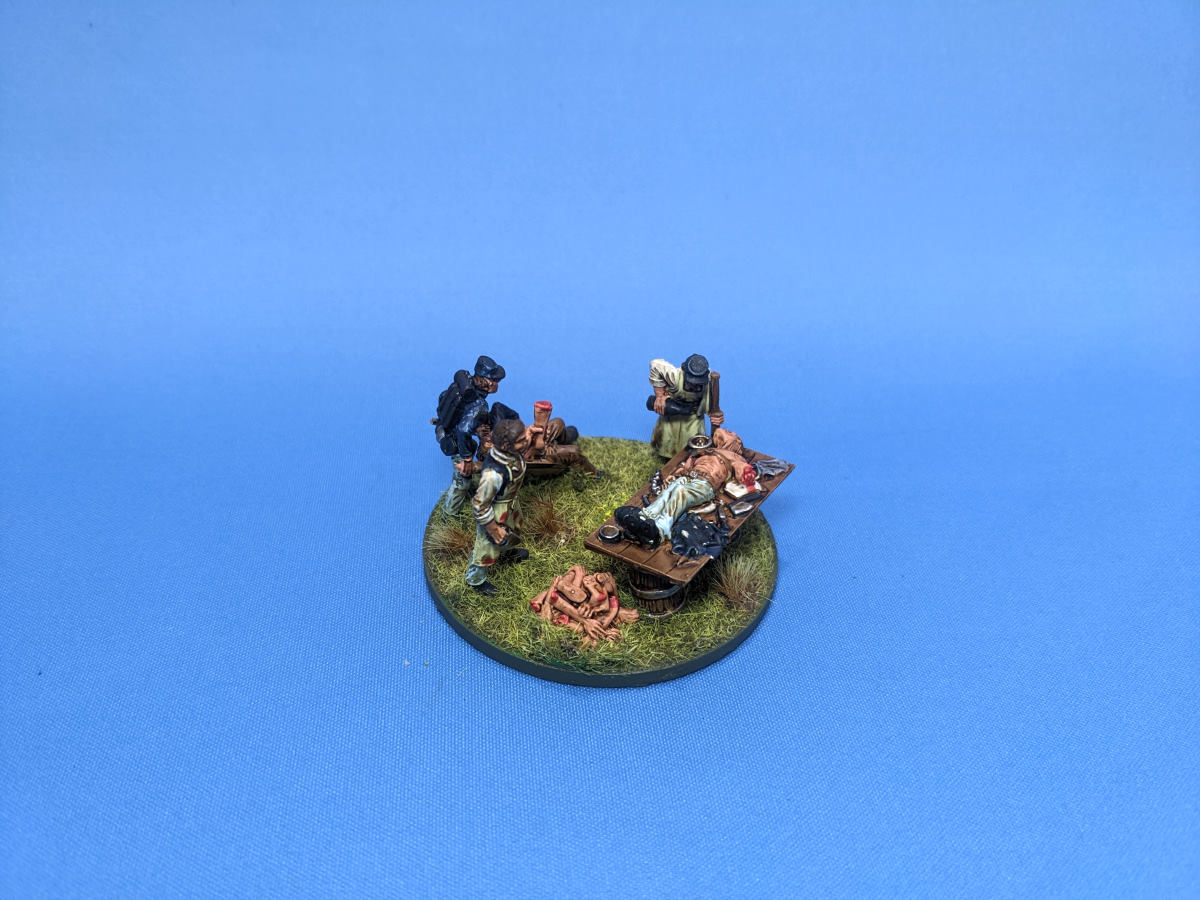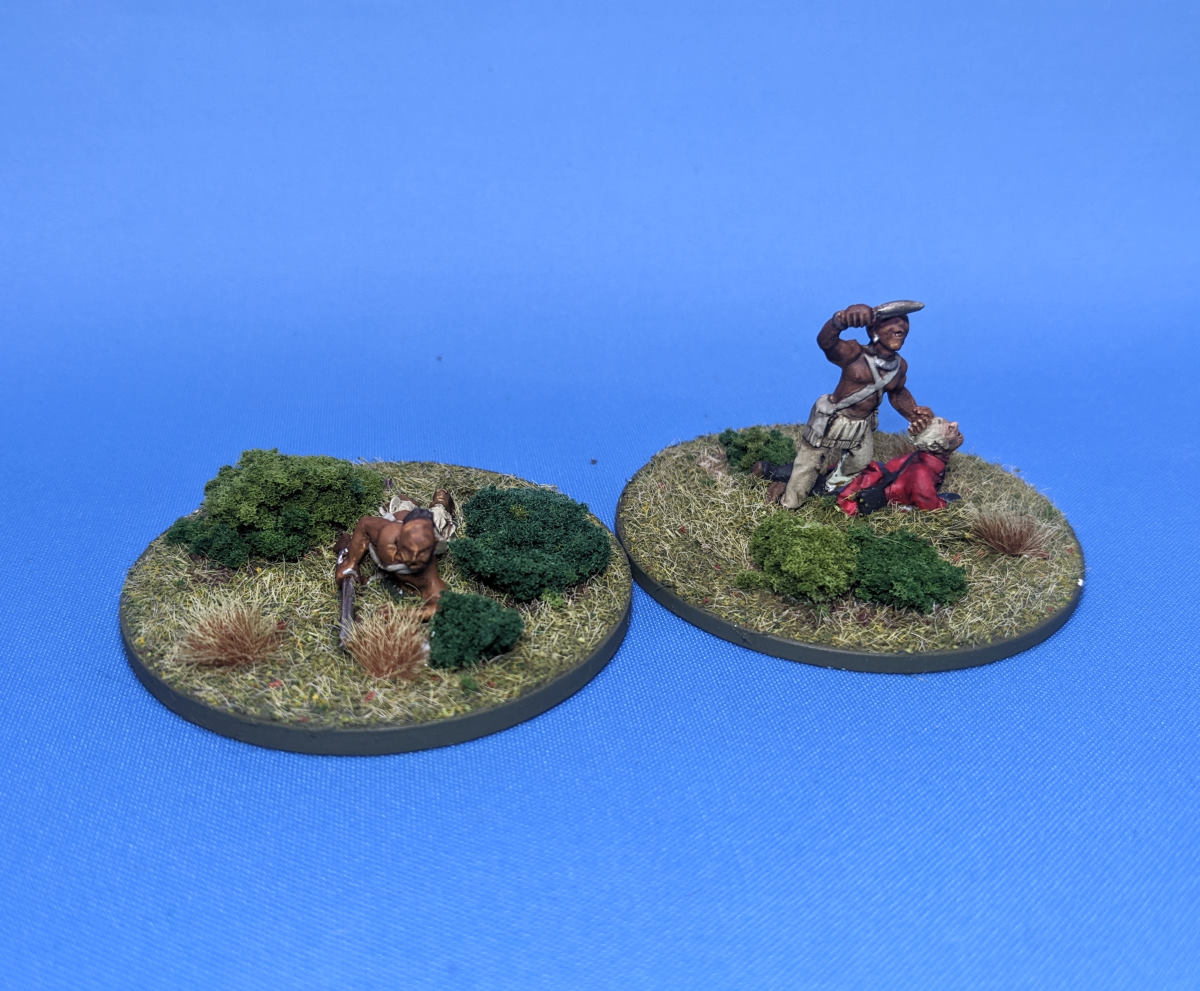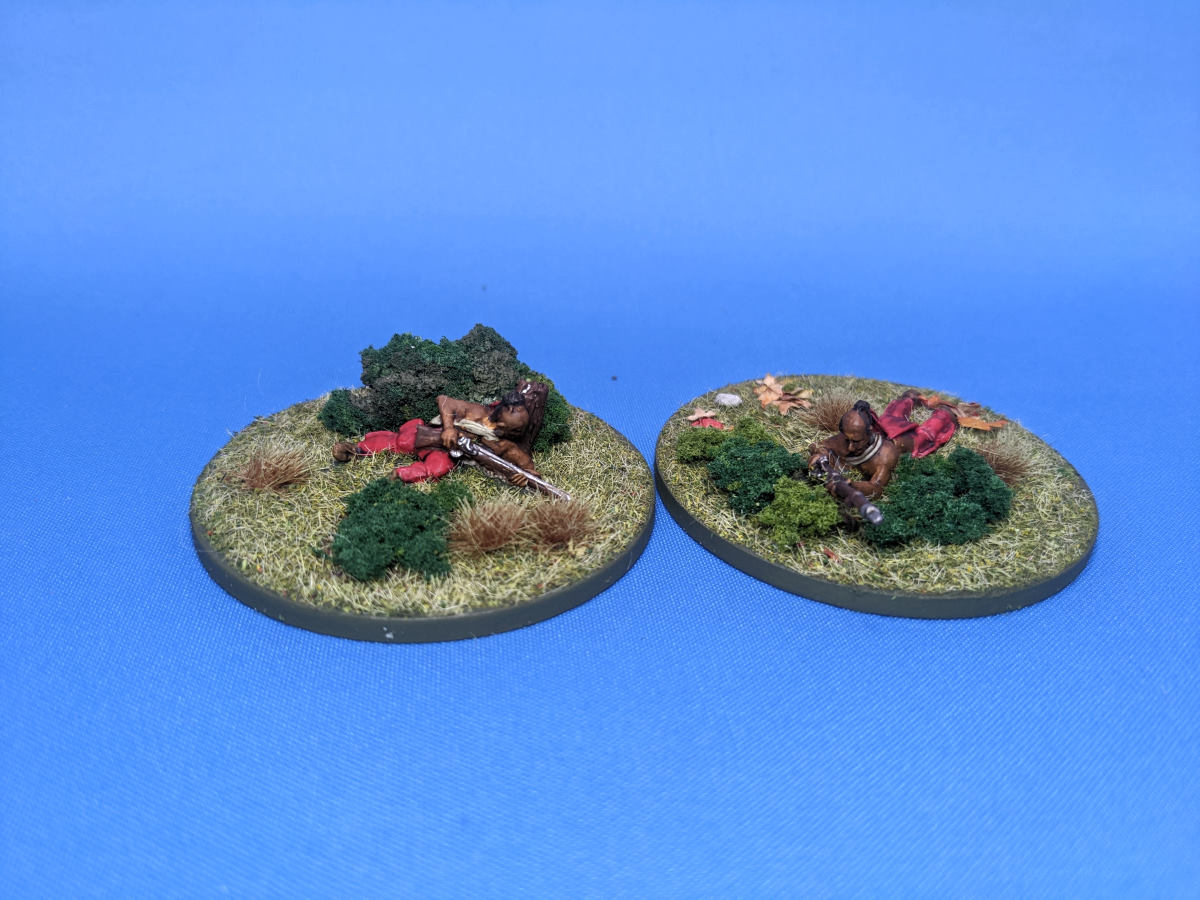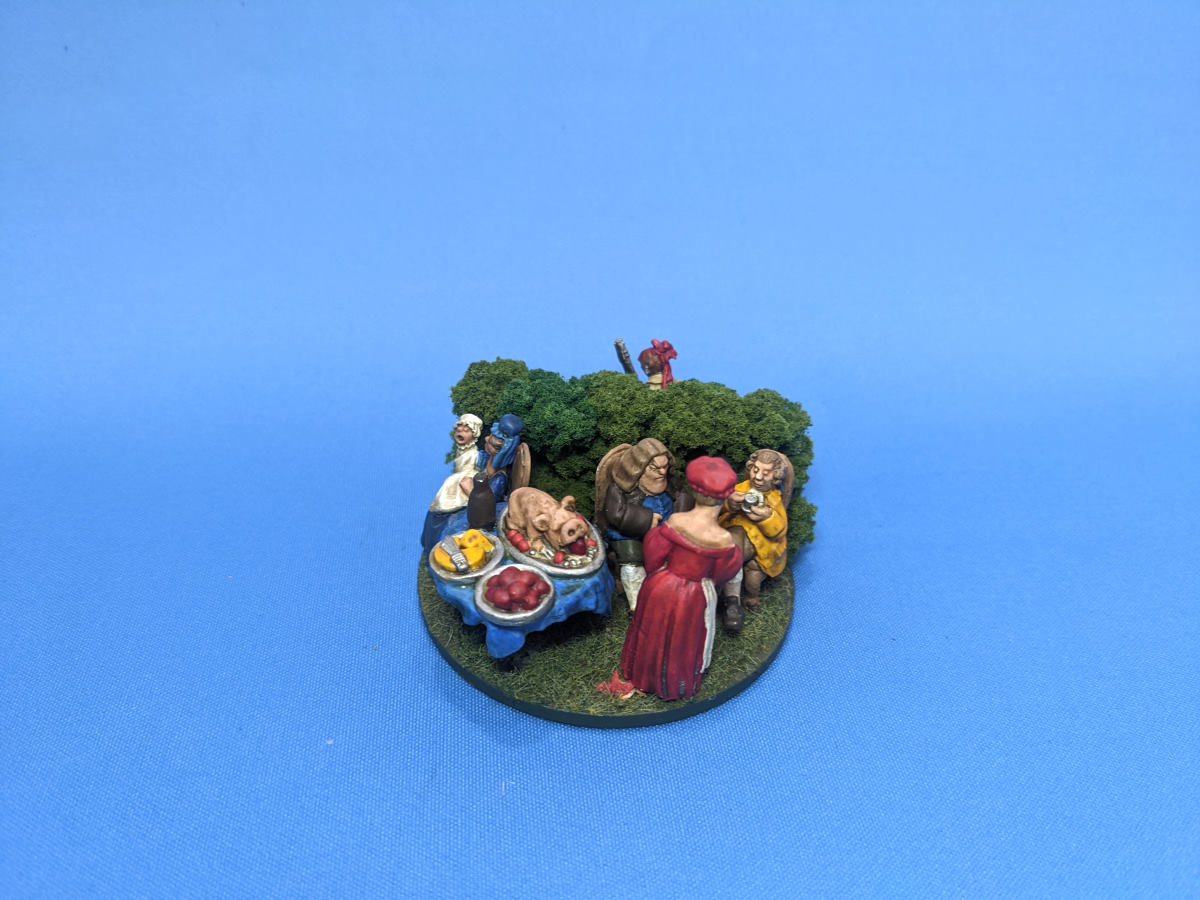Deployment Points
Deployment points are used in many games as a way to show where your force will enter the table. Sometimes it’s just an entry point from the table edge, sometimes it’s actually on the board further up – simulating the fog of war and how your enemy can’t see all your movements before your troops enter the battle.
Sharp Practice defines deployment points as such:
Deployment Points: Deployment Points are markers which indicate the point, or points, on the table from which a force Commander can deploy troops.
The primary Deployment Point also represents a force’s line of communications and, potentially, retreat. It should be protected as its loss will have a negative effect on your Force Morale.
Secondary Deployment Points provide greater flexibility of deployment and are normally present when a force has good local knowledge. These do not need to be protected in the same way as the primary Deployment Point.
Usually both sides will have a deployment point in Sharp Practice. Artillery and carts will deploy in contact with it, while various infantry and cavalry types deploy anywhere from 6”-18” from it, perhaps more if no enemies can see the DP.
So what is a deployment point? Simply put, it’s a base with some stuff on it. I (mugginns) use 60mm bases because I want to make them a neato diorama, but you could use basically any size base. You could even just use a cardboard base with nothing on it. You can try to theme it to the armies you’ve painted or just make a neat scene from the time period or area.
Jumping-Off Points
Chain of Command uses a similar system – not surprising considering both are Lardy games and share a common lineage – with each player having some number of “Jumping Off Points” (often shortened to “Jump-Off Points” or simply “JOPs”), usually three for each side. JOPs are usually the only places on the table from which infantry units can deploy, and losing one of your JOPs is not only potentially disastrous from a command-and-control perspective, it can also be a significant hit to your overall Force Morale. In this regard, JOPs are not only how you deploy on the table, they also serve as capturable objectives for your opponent!
One of the really cool things about Chain of Command is that unlike most other tabletop wargames, the locations of your JOPs are not dictated by the scenario. They are the direct result of the pre-game “Patrol Phase” in which players move markers around the board to represent the movement of scouts before the battle begins. The final locations of the patrol markers dictate where the JOPs can be placed, with additional requirement that the JOP be placed in at least some cover (this represents covered or hidden avenues of approach). You can play the same scenario on the same table multiple times and get wildly different feels just based on how the Patrol Phase plays out and where people end up placing their JOPs. When they deploy, troops may be placed anywhere within 6″ of a friendly JOP (though this distance is shorter for “green” troops and longer for veterans). Often, the first inkling you have that an enemy unit is nearby is when they get plopped on the table near a JOP and start shooting at you, something which models the “empty battlefield” of modern warfare very well.
Like Deployment Points, JOPs are usually represented on the battlefield by some stuff on a small base. A lot of times this ends up being a pile of crates or some barrels or what have you, representing supplies of fuel and ammunition being moved to the front to keep the guys at the pointy end well stocked. But tiny dioramas representing scouts or even small scout vehicles are also common, as are “Casualty Collection Points.” Basically, anything that you can point to as a fixed location that won’t get confused with actual troops or units is fair game, and some people get really creative here.
Show-and-Tell Time!
Here is a gallery curated by the Goonhammer crew showing off various examples of deployment points, jump off points, and objective markers in historical games, followed by a short description of what game it’s for, what is happening, and how it was sourced. Check it out!
Michael O “Mugginns”
I’ve created deployment points for both French and Indian War and American Civil War. Most of them are really not something you’d see on the front lines – they’re mostly just an excuse to use some cool minis. See this one for example:
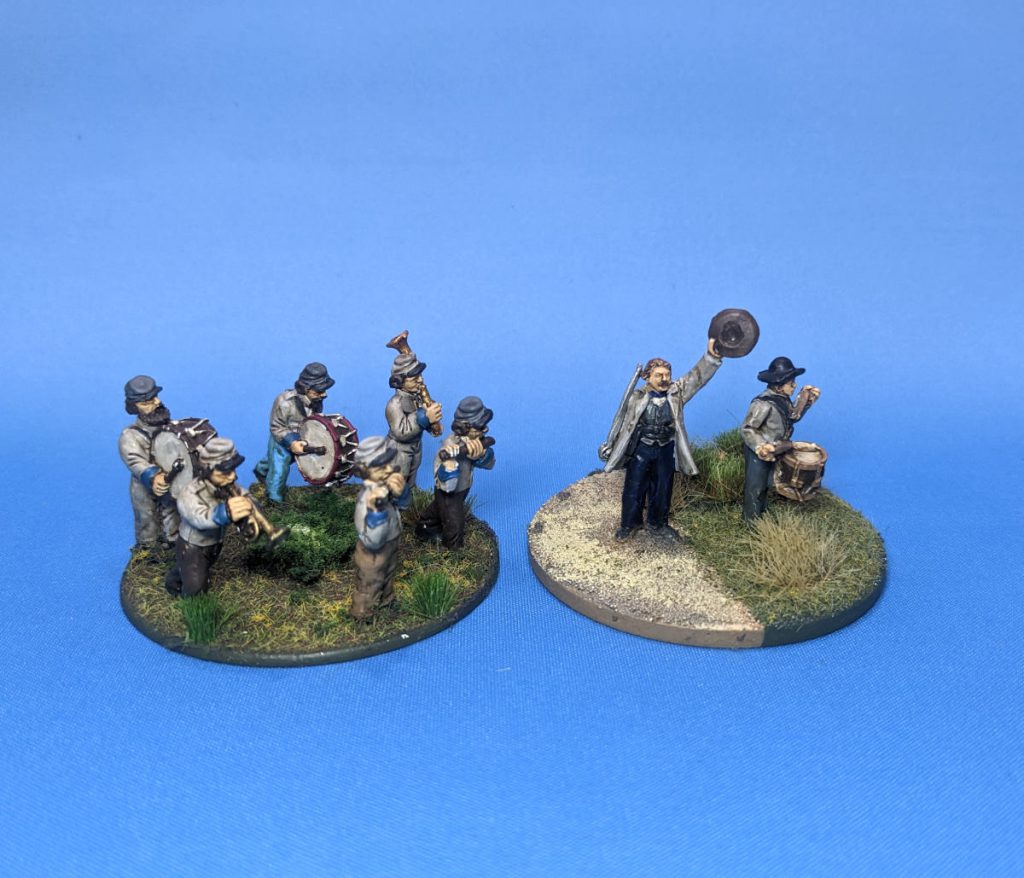
A drum corps like that would not be leading the force onto the field, but I had to have these dudes painted up. They’re from Dixon – not my favorite mini line, but they’re the only company who has made these types of minis and I love it. The other guy is from Perry, and it is a good example of a DP – an officer flagging down his men, maybe an adjutant or a scouting officer on a road telling them where to break off.
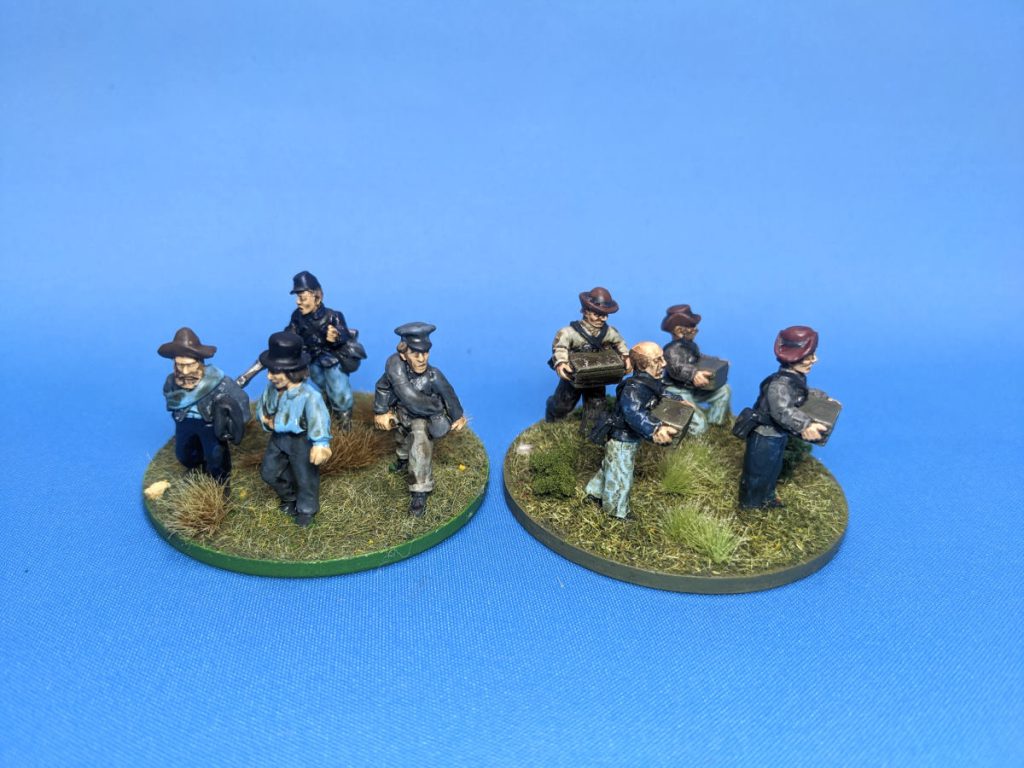
The soldier escorting prisoners is definitely more realistic as a frontline deployment point – he’s a skirmisher and he and his pards just captured these rebs to be sent up the river to Elmira Prison. The soldiers carrying ammo boxes would be more of a rear action thing, but once your troops are on the board technically they’re in the rear. Guys on the left are from Perry, guys on the right are from Steve Barber Miniatures, who has a ton of great ACW stuff.
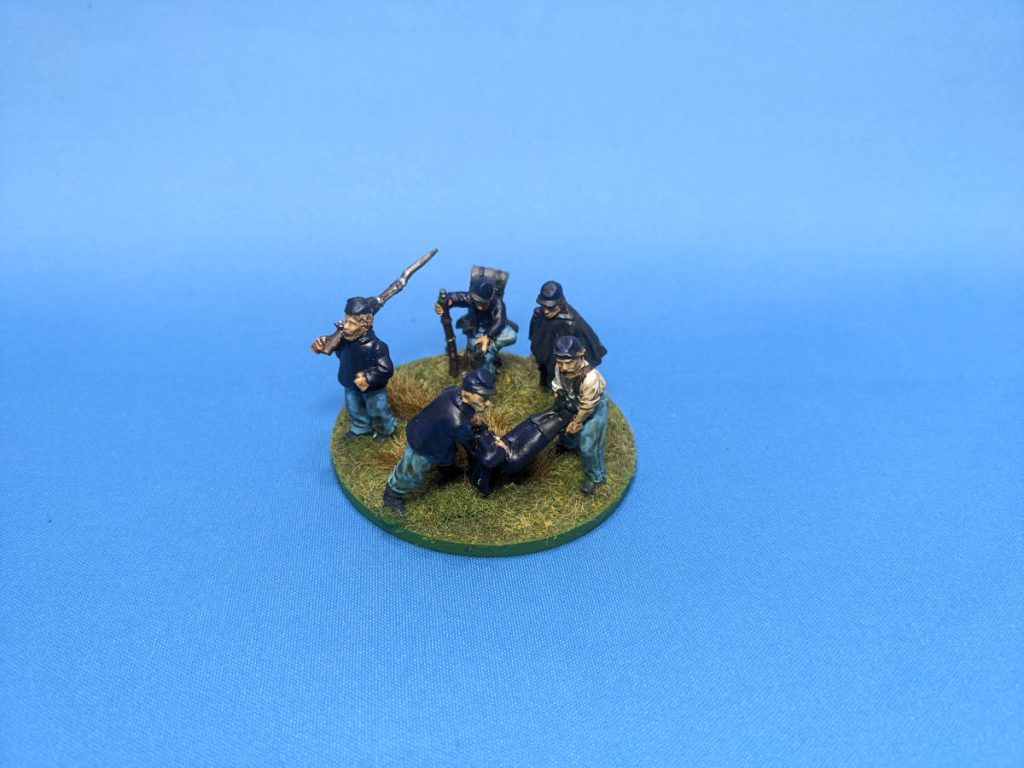
These are some more Perry Miniatures here and again I think it’s a great little scene of skirmishers moving their pard off the field.
These miniatures are long out of print, by Architects of War for their American Uncivil War line. It’s a little grotesque, and it would definitely be far back from the lines, but I wanted to use the minis. Lots of crisp detail and a ton of character, although a bit over the top.
For AdeptiCon 2022 I wanted to have some movable deployment points, so I grabbed some Native American minis and put each on a 60mm base with a lot of scrub and cover. Native Americans in the game usually have a moveable DP so these work great. I can also just use them for a regular DP if I need to.
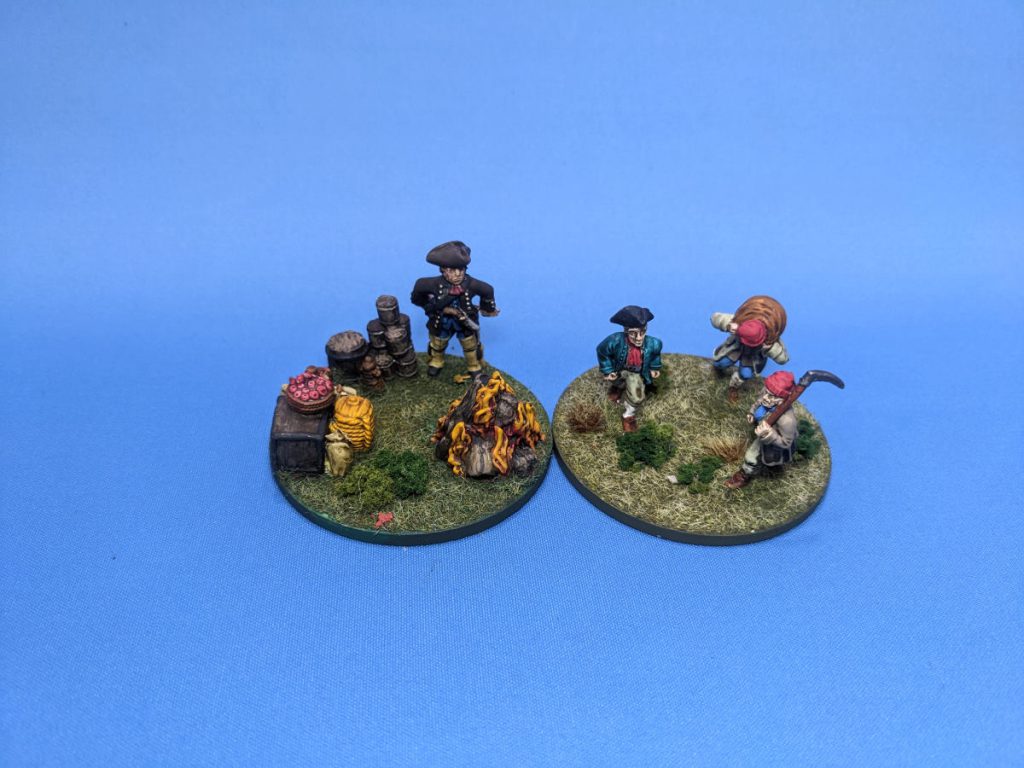
French and Indian War quartermaster and supply duty. Credit: MugginnsThe guy on the left is from Galloping Major, I believe one of the freebies you get when you buy minis in a certain time of the year. He’s a quartermaster or supply logistics guy in this deployment point. I’m not sure where the guys on the right are from but they’re carrying baggage and moving ahead of the army to scout.
This is one of the first deployment points I have done and is made up with minis from Eureka Miniatures. Again, definitely not a frontline activity here – the soldiers are marching through the frontier and a local politician or oligarch is here with some family members taking a nice lunch while the army rests. Little do they know – a Native American soldier waits on the other side of a hedge.
Aaron “Lenoon” Bowen
As my French are the Imperial Guard, there’s a certain grandeur to their arrival on the battlefield that shapes all the other bits and bobs that need to go with them – objective markers and deployment points included. I like all my stuff to tell a story, even if that story is a little daft, and the story of the Guard is twofold: they arrive late to save the day, and they are a reserve committed based on battlefield intel. Battlefield intel was the choice for deployment points. Sharp Practice has two types of deployment point, and I wanted them to look visually very different while still fitting in with my general base schemes in their size, shape and basing.
The fixed deployment point comes straight out of Shondaland because it struck me that if set in 1813, there’s only one thing everyone in Bridgerton should be talking about and it sure as shit isn’t Lady Whistledown. 1813? The Emperor returned from Russia and building a new army, desparately reeling? Is this the time to be talking about the season, or frocks? Surely, it’s time to be mourning the slow death of the Emperor’s Dream? Surely, if there is a man of the season, it is Napoleon? From repeatedly pointing this out until my partner told me to shut up, seriously, it’s annoying now, it was a short jump to Front Rank miniatures, where a civilian set sorted me out with two society ladies.
I wanted the primary deployment point to stand out and be obvious, but not so jarring that it seems weird or extremely out of place. As a result, they’re based just like everyone else, and painted them according to clothes from the show, choosing colours that wouldn’t normally be seen in my Guard armies. It helps that Bridgerton is a very colour-saturated show, so one pale blue and one extremely yellow dress it was. The Guard now march on the orders of the Emperor, to the places suggested by Héloïse and Penélopé, secret agents for L’Empereur.
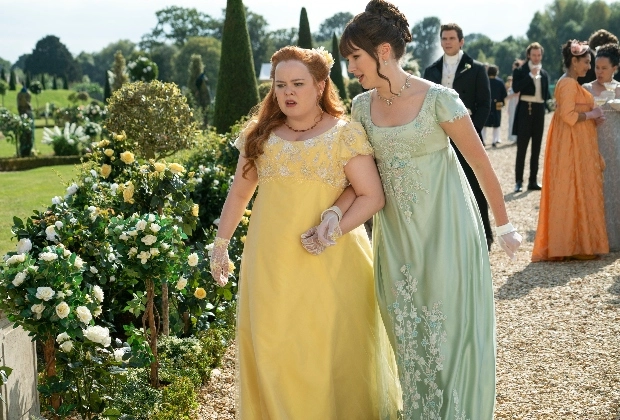
The mobile deployment point was a lot easier and slightly more traditional. A scouting cavalryman finds sealed orders (in a rather anachronistic scroll for some reason) near to the body of a fallen foe who just happens to look a bit like Yorkshire’s Favoured Son? These must be important – and the information within gives the Guard a tactical advantage! Onward, Eclaireurs! Both of these models are from Perry – the dismounted Dragoon (note a line Dragoon, not a guardsman!) and the fallen British Rifleman from the Cuirassier kit. Making our intrepid hero a line Dragoon means that (to me at least!) this is visual evidence that the Guard are following up on intel secured by other parts of the Grand Armee. It’s a little nod to the wider battles that my elite final reserve would have been embedded in.

Marc “llor” Renouf
When I first got into gaming the Second World War, I started in North Africa. As such, for me representing a JOP was all about fuel, water, and ammunition – crates and barrels were the order of the day. And because I’m an old grognard, I decided to simply make these elements from scratch. The crates were made from wooden blocks and coffee stirrers and the barrels were made from paper, card, and wire. The whole process is a little time consuming, but if you’re building terrain on a budget you can’t beat the low-cost DIY solutions. Chain of Command doesn’t require a specific size for your JOP, but putting something on a huge base to “model for advantage” and make a bigger deployment zone is considered gauche. These are mounted on 2″ steel rounds, which means they have a little heft to not get knocked around and fasten securely in my magnetic cases.

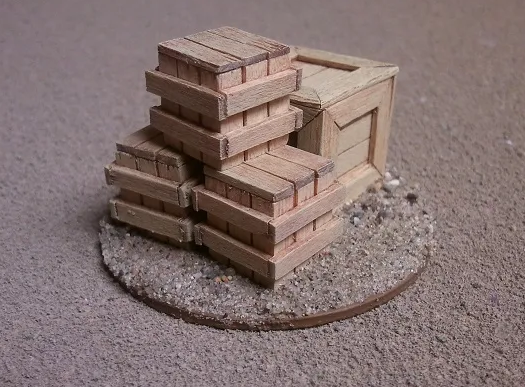
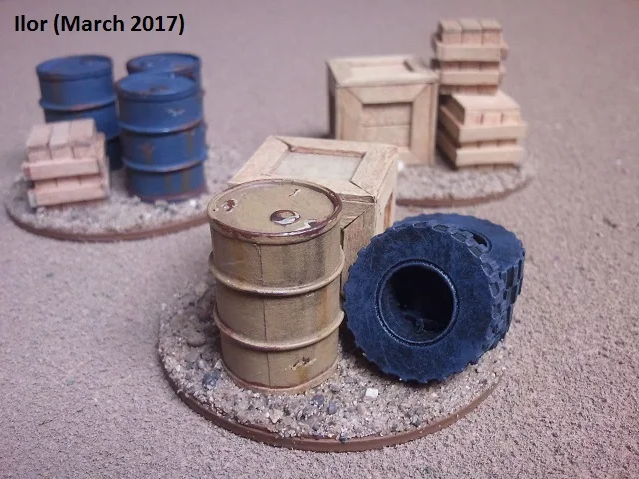
Nowadays, the decreased cost and increased access to 3D printing has really made this sort of thing even easier, as loads of companies are selling either finished prints or STLs such that you can print your own if you have the equipment. STLs for barrels and boxes and crates abound on Thingiverse.
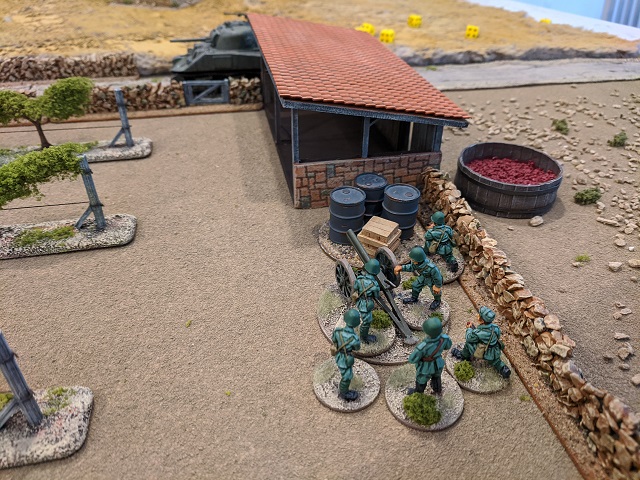
Do you have great ideas for DPs and JOPs? What do you use in your games? Do you agree that everyone in Bridgerton would be talking about Napoleon, all the damn time? Check back next week for more exciting Historical content! And if you have any questions or feedback, drop us a note in the comments below or email us at contact@goonhammer.com.


